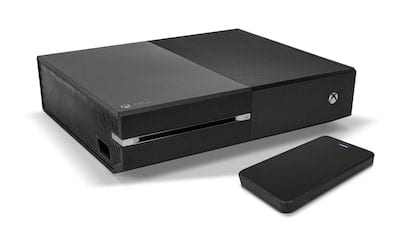 With the cold weather upon us, it makes sense to touch on a topic that few consider…bringing a hard drive up to room temperature – or at least operating temperature parameters – before using.
With the cold weather upon us, it makes sense to touch on a topic that few consider…bringing a hard drive up to room temperature – or at least operating temperature parameters – before using.
Any fluid can freeze if it gets cold enough, including the lubricant inside your hard drive. When the hard drive tries to spin up the platters will not turn because the fluid isn’t viscous enough to allow the platters to spin at their proper speed. As a result, you’re looking at a drive that won’t boot up at all, or worse, is spinning at the wrong speeds and possibly corrupting the data on the drive.
An equally important factor is condensation. Ever pull an ice cold beer out of the cooler on a warm day? What happens? That’s right! Condensation forms on the outside of the bottle. Now think about that hard drive you just pulled in from the cold… exactly. Water and electronic components just don’t mix. If you’re receiving a brand new hard drive that has been sitting out in the freezing cold, its best to let it come up to temperature in the original shipping container so that the increase in temperature is gradual.
So, exciting as receiving your new drive is, we wouldn’t suggest immediately opening and plugging it into a NewerTech Voyager or USB Universal Drive Adapter while in a “frozen” state. The same factors also apply when bringing in your laptop from the cold to protect the hard drive inside.
Now, keep in mind, we’re talking very cold weather here. Most modern hard drives have a low operating temperature of 0 degrees Celsius (32 degrees Fahrenheit), aka. the freezing point of water. And the vast majority are safe for storage in even colder temperatures. We’re also talking about platter-based hard disks. A Solid State Drive (SSD) with no moving parts has a much greater operating temperature range, as low as -55 degrees Celsius (-67 degrees Fahrenheit). So, if you’re planning an Arctic Expedition anytime soon – SSD would definitely be the way to go.








don’t guess. do hard disk error checking, set it to automatically fix file system errors and set scan for and attempt recovery of bad sectors. and then never do this again, let it sit for a few hours after coming in from the cold
Some SSD drive’s specs only show 0 – 70 C.. So read the specs before you buy!
Thumbs up for Micheal. I have tested both SSD & HDD on low temperatures in a temperature chamber. SSD works on temperature as low as -20 deg C but HDD on other hand fails to operate at -5 deg C. I was in search of an answer for this, your blog explains it all.
I have 2 computers in my garden house (not heated) for backups. They are in a closed cupboard in winter and in summer, I remove the door of the cupboard. Over a period of 10 years, I’ve had only one hard drive fail due to cold. Even when it’s 40 below, the heat generated by the computers is enough to keep the things running. But it can become very cold in the cupboard, although not as cold as outside.